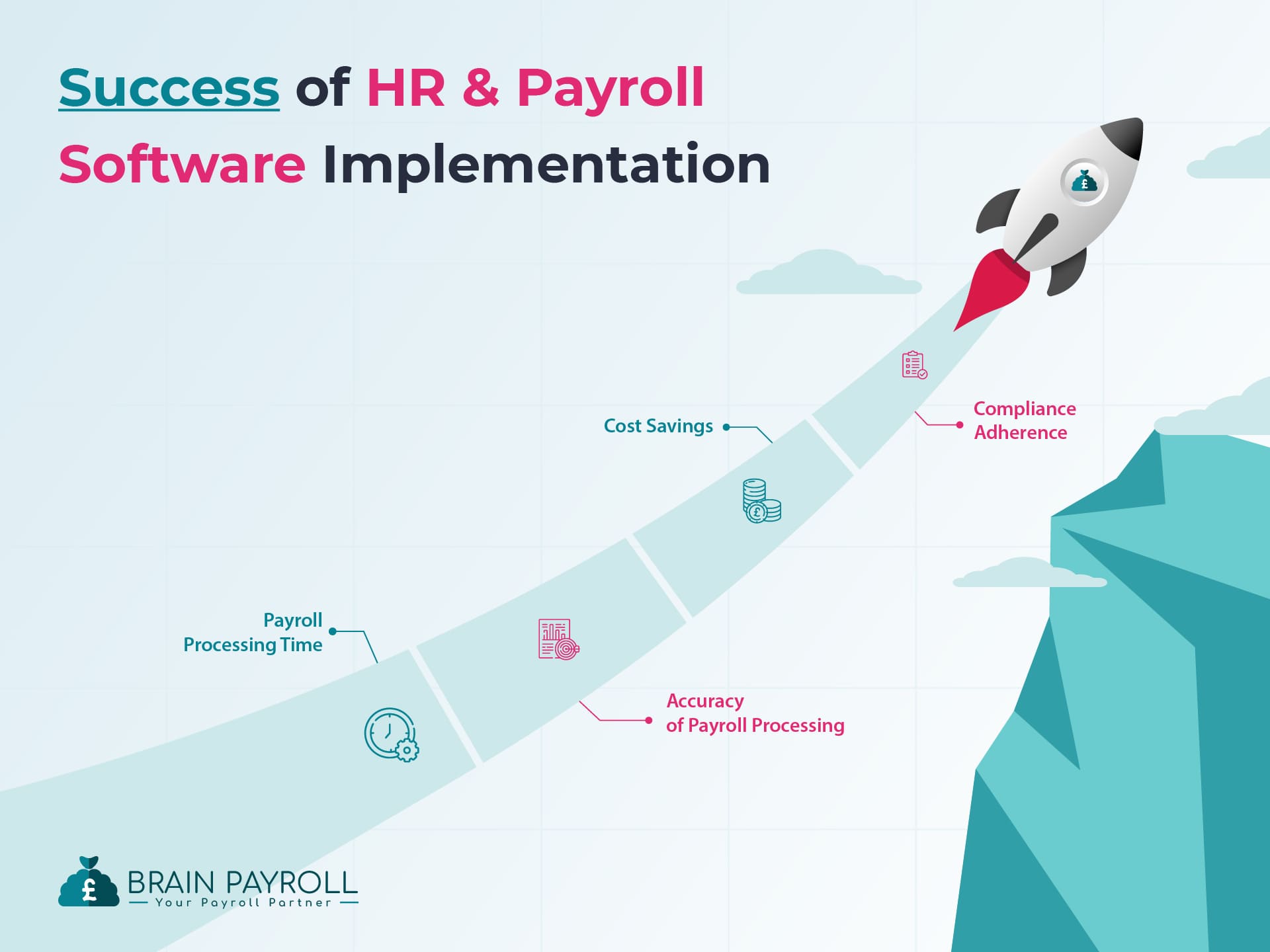To measure the success of software implementation, you can consider several key metrics, including schedule adherence, scope management, budget compliance, team and customer satisfaction, quality of work, and delivery and organizational capabilities. By aligning project objectives with the organization’s strategy, allocating resources accordingly, and ensuring that the project portfolio implements the strategy, you can effectively measure the success of implemented strategies.
Additionally, gathering customer feedback, reviewing project specifications, ensuring budget compliance, meeting schedule requirements, reviewing team satisfaction, and determining quality measurements are essential in measuring the success of a software program or development project. Service quality and client satisfaction are also crucial measures of success in software development projects.
By monitoring these metrics, you can accurately assess the success of software implementation and development.

Credit: www.brainpayroll.co.uk
Introduction To Software Implementation Success
When it comes to software implementation, measuring success is crucial. It helps you determine whether your project met its objectives and identify areas that need improvement. There are several key metrics that you can use to measure the success of your software implementation project. These include schedule, scope, budget, team satisfaction, customer satisfaction, quality of work, delivery capability, and organizational capability.
Measuring the success of your software implementation project is important because it enables you to align project objectives with your organization’s strategy, allocate resources accordingly, and ensure that your project portfolio implements the strategy. There are several ways you can measure success, including gathering customer feedback, reviewing project specifications, ensuring budget compliance, meeting schedule requirements, reviewing team satisfaction, and determining quality measurements.
As a software developer, measuring success is also important. Real-world software development metrics can help you measure the success of your projects. These metrics include code quality, delivery speed, service quality, and client satisfaction. By measuring these metrics, you can improve your software development process and deliver better products.
In conclusion, measuring the success of your software implementation project is crucial. By using key metrics and real-world software development metrics, you can determine whether your project met its objectives and identify areas that need improvement. This will enable you to deliver better products and improve your software development process.
Project Schedule Compliance
In order to measure the success of a software implementation, it is crucial to set realistic timelines for the project schedule. This involves carefully considering the scope of work and available resources to establish achievable deadlines. Once the schedule is in place, it is important to monitor progress against deadlines to ensure that the project stays on track. This process allows for adjustments to be made if necessary and helps in maintaining project schedule compliance throughout the implementation.
Scope Management
When it comes to measuring the success of software implementation, it is crucial to focus on scope management. Defining clear objectives is essential to ensure that the project stays on track and delivers the intended results. It is important to establish a clear scope to prevent scope creep and avoid unnecessary changes that can impact the project’s success. By maintaining a well-defined scope, the project team can effectively manage resources and timelines, leading to a successful software implementation.
Budget Adherence
When it comes to measuring the success of software implementation, one important aspect to consider is budget adherence. Planning and forecasting play a crucial role in ensuring that the project stays within the allocated budget. Tracking expenses throughout the implementation process is essential to identify any deviations and take corrective measures if necessary.
By closely monitoring the expenses, project managers can identify areas where costs can be optimized and make informed decisions to keep the project on track financially. This includes analyzing the budget utilization, comparing it with the planned expenses, and making adjustments as needed.
Effective budget adherence not only demonstrates financial discipline but also ensures that the resources are allocated appropriately, maximizing the return on investment. It allows stakeholders to evaluate the cost-effectiveness of the software implementation and provides insights into the overall success of the project.
Team Satisfaction Levels
One of the key measures of success for software implementation is team satisfaction levels. In addition to meeting schedule and budget requirements, it’s important to ensure that the team is happy and engaged throughout the project. Customer satisfaction and quality of work are also important metrics to consider.
| Measurements of Success for Software Implementation |
|---|
| Schedule |
| Scope |
| Budget |
| Team Satisfaction |
| Customer Satisfaction |
| Quality of Work |
| Delivery Capability |
| Organizational Capability |
Customer Satisfaction Measurement
When it comes to measuring the success of software implementation, customer satisfaction is a key metric. Gathering and analyzing feedback from customers can help identify areas of improvement and make necessary changes to enhance user experience. One way to gather feedback is through surveys or interviews, where customers can provide their opinions on the software. Analyzing this feedback can help identify patterns and common issues that need to be addressed.
Another way to enhance user experience is to measure how often users are utilizing the software and whether they are achieving their desired outcomes. This can be measured through usage analytics and tracking key performance indicators (KPIs) such as user engagement and task completion rates. By continuously monitoring and analyzing these metrics, software developers can make informed decisions on how to improve the software and increase customer satisfaction.
Quality Of Work Evaluation
When it comes to measuring the success of a software implementation, there are several key factors to consider. One important aspect is the quality of work evaluation. This involves establishing quality benchmarks and continuously improving practices.
By setting quality benchmarks, you can define the standards and expectations for the work being done. This can include factors such as code quality, adherence to best practices, and meeting project requirements. Continuous improvement practices ensure that the quality of work is constantly being monitored and enhanced.
Measuring the success of a software implementation also involves evaluating other factors such as schedule adherence, budget compliance, team satisfaction, customer satisfaction, and delivery capability. These metrics provide a comprehensive view of the overall success of the implementation.
By focusing on quality of work evaluation and continuously improving practices, you can ensure that your software implementation is successful and meets the desired outcomes.
Delivery Capability
When evaluating the success of software implementation, it is crucial to measure delivery capability. This involves assessing the efficiency of deployment and optimizing release cycles to ensure timely and effective delivery of software updates and features. By focusing on delivery capability, organizations can streamline their deployment processes and enhance their ability to meet customer demands and market expectations.
Organizational Capability Improvement
When it comes to measuring the success of software implementation, it is important to assess organizational capability improvement. This can be achieved by building a learning organization that encourages continuous skill development and knowledge sharing. Additionally, fostering innovation within the organization can lead to improved processes and solutions.
Alignment With Strategic Objectives
One way to measure the success of software implementation is by aligning project objectives with the organization’s strategy. This involves allocating resources accordingly and ensuring that the project portfolio implements the strategy. Other measures of success include schedule, scope, budget, team and customer satisfaction, quality of work, and delivery capability.
It’s important to gather customer feedback, review project specifications, ensure budget compliance, meet schedule requirements, review team satisfaction, and determine quality measurements.
| Six Measurements of Project Success |
|---|
| Schedule |
| Scope |
| Budget |
| Team Satisfaction |
| Customer Satisfaction |
| Quality of Work |
| Delivery Capability |
| Organizational Capability |
Gathering Customer Feedback
When it comes to measuring the success of software implementation, gathering customer feedback is a crucial step. There are several methods for collecting feedback, such as conducting surveys, interviews, or focus groups. These methods allow you to gain insights into the customer’s experience with the software and identify areas for improvement.
Actioning on customer insights is equally important. By analyzing the feedback received, you can prioritize and implement changes that address the customers’ needs and preferences. This helps in enhancing customer satisfaction and improving the overall success of the software implementation.
Remember, the success of a software implementation can be measured through various metrics, including schedule adherence, scope completion, budget compliance, team and customer satisfaction, and the quality of work delivered. By continuously monitoring and evaluating these metrics, you can assess the success of your software implementation and make necessary adjustments to ensure its effectiveness.
Review Of Project Specifications
When measuring the success of software implementation, it is crucial to review the project specifications. This involves ensuring that the implemented software adheres to the initial requirements and specifications. Additionally, making necessary adjustments and iterations to the software based on the project specifications is essential for determining its success. By continuously evaluating and aligning the software with the project requirements, organizations can effectively measure the success of the software implementation.
Budget Compliance Strategies
Cost management techniques play a crucial role in ensuring budget compliance during software implementation. By avoiding financial overruns, businesses can measure the success of their software implementation more effectively. Here are a few techniques to consider:
- Thoroughly analyze project requirements and create a detailed budget plan.
- Regularly track and monitor expenses to identify any deviations from the budget.
- Implement cost-saving measures such as optimizing resource allocation and negotiating favorable contracts with vendors.
- Establish clear communication channels to address any budget-related concerns promptly.
- Regularly review and reassess the budget to accommodate any changes or unforeseen circumstances.
By implementing these cost management techniques, businesses can ensure that their software implementation stays within budget, leading to a successful outcome.
Schedule Adherence Techniques
Time Management Tools
When it comes to measuring the success of software implementation, there are several key factors to consider. Schedule adherence is one of the most important aspects to track. This involves ensuring that the project is progressing according to the planned timeline. Time management tools can be instrumental in helping teams stay on track and meet deadlines. These tools can include project management software, task tracking tools, and calendar applications. By utilizing these tools effectively, teams can identify any delays and take proactive measures to address them. Dealing with delays is crucial to maintain schedule adherence and ensure the successful implementation of the software. It is important to allocate resources accordingly and review project specifications to ensure that the project is moving forward smoothly. By measuring schedule adherence and utilizing time management tools, teams can effectively measure the success of software implementation.
Team Satisfaction Improvement
When measuring the success of software implementation, it’s important to focus on improving team satisfaction. Conducting surveys and interviews can provide valuable insights into employee experiences. Implementing feedback from these exercises can lead to positive changes in the work environment. It’s crucial to address any issues that are identified and continuously monitor team satisfaction to ensure ongoing improvement.
Quality Measurement Strategies
When it comes to measuring the success of software implementation, utilizing metrics and key performance indicators (KPIs) is crucial. These measurements provide valuable insights into the quality assurance processes and help assess the effectiveness of the implementation.
By establishing clear metrics and KPIs, organizations can track the progress and evaluate the success of software implementation projects. Some key measurements include:
| Schedule | Ensuring projects are delivered within the specified timeline |
| Scope | Ensuring that the implemented software meets the defined scope and objectives |
| Budget | Managing project costs and adhering to the allocated budget |
| Team Satisfaction | Evaluating the satisfaction levels of the project team members |
| Customer Satisfaction | Measuring the satisfaction levels of the end-users or customers |
| Quality of Work | Assessing the overall quality of the implemented software |
By monitoring these metrics and KPIs, organizations can gain insights into the success of their software implementation projects and make informed decisions to improve future implementations.
Effective Communication With Stakeholders
To effectively measure the success of software implementation, it is important to consider various factors such as the adherence to schedule, scope, budget, team and customer satisfaction, and the quality of work delivered. By aligning project objectives with the organization’s strategy and evaluating these metrics, stakeholders can determine the overall success of the implementation.
| Strategies for Clear Communication |
|---|
| 1. Define your communication goals and objectives clearly. |
| 2. Identify your stakeholders and their expectations. |
| 3. Choose the appropriate communication tools and platforms. |
| 4. Establish a communication plan and schedule. |
| 5. Use clear and concise language to convey your message. |
| 6. Encourage feedback and respond promptly to queries and concerns. |
Real-world Metrics For Software Development
Code Quality Metrics: One way to measure the success of software implementation is by analyzing code quality metrics. This includes assessing factors such as code complexity, code duplication, and adherence to coding standards. High code quality contributes to a more stable and maintainable software system.
Productivity and Efficiency Metrics: Another important aspect is measuring productivity and efficiency metrics. This involves evaluating factors such as development time, resource utilization, and the rate of defect resolution. Improved productivity and efficiency indicate successful software implementation.
Case Studies: Success Stories
Successful software implementation can be measured in various ways. One crucial aspect is aligning project objectives with the organization’s strategy. Resource allocation and budget compliance are also important indicators. Customer feedback and team satisfaction are key components in determining success. Quality measurements and delivery capability play a significant role as well. Moreover, the service quality and client satisfaction are vital metrics in software development success. Measuring project success from different angles and reviewing project specifications are also helpful in assessing the success of a software project.

Credit: www.sikich.com
Conclusion And Future Outlook
When it comes to measuring the success of software implementation, there are several key factors to consider. These include the adherence to schedule and budget, team and customer satisfaction, and the quality of work delivered. By aligning project objectives with the organization’s strategy and allocating resources accordingly, the success of implemented strategies can be measured. Additionally, gathering customer feedback, reviewing project specifications, ensuring budget compliance, meeting schedule requirements, reviewing team satisfaction, and determining quality measurements are all effective ways to measure success. In software development projects, service quality and client satisfaction are two crucial measures of success. Metrics such as code quality, delivery speed, and cooperation assessment are important indicators of successful software development. By tracking these metrics, organizations can gain insights into the overall success of their software implementation projects.

Credit: www.researchgate.net
Frequently Asked Questions
How Do You Measure The Success Of A Software Implementation?
To measure the success of a software implementation, you can consider: schedule adherence, scope completion, budget compliance, team and customer satisfaction, quality of work, and delivery capability. Align project objectives with organizational strategy and gather customer feedback to gauge success.
What Will Be The Measure Of Success Of The Implementation?
The measure of success will be based on aligning project objectives with the organization’s strategy, allocating resources accordingly, and ensuring that the project implements the strategy effectively. Success can also be measured by customer feedback, budget compliance, meeting schedule requirements, team satisfaction, and quality measurements.
How To Measure The Success Of A Program?
To measure the success of a program, you can use six key metrics: customer feedback, project specifications, budget compliance, schedule requirements, team satisfaction, and quality measurements. It’s important to align project objectives with the organization’s strategy and allocate resources accordingly.
You can also use KPIs to measure success from different angles, such as service quality and client satisfaction.
How To Measure Success As A Software Developer?
To measure success as a software developer, consider these key metrics: schedule adherence, scope management, budget control, team and customer satisfaction, and the quality of work delivered. Align project objectives with organizational strategy, allocate resources accordingly, and assess project portfolio alignment.
Also, gather customer feedback, review project specifications, ensure budget compliance, meet schedule requirements, review team satisfaction, and determine quality measurements. By focusing on these aspects, you can effectively measure success in software development.
Faq 1: How Do You Measure The Success Of Software Implementation?
The success of software implementation can be measured by evaluating the project’s schedule, scope, budget, team satisfaction, customer satisfaction, quality of work, delivery capability, and organizational capability.
Faq 2: What Will Be The Measure Of Success Of The Implementation?
The measure of success for software implementation is determined by aligning project objectives with the organization’s strategy, allocating resources accordingly, and ensuring that the project portfolio implements the strategy effectively.
Faq 3: How Can You Measure The Success Of Implemented Strategies?
Implemented strategies can be measured by gathering customer feedback, reviewing project specifications, ensuring budget compliance, meeting schedule requirements, reviewing team satisfaction, and determining quality measurements.
Faq 4: How To Measure Success As A Software Developer?
Success as a software developer can be measured by real-world software development metrics that assess factors such as code quality, delivery speed, and client satisfaction.
Faq 5: How To Measure The Success Of A Software Project?
The success of a software project can be measured by evaluating key factors such as schedule adherence, scope completion, budget control, team satisfaction, customer satisfaction, and the quality of work delivered.
Faq 6: How To Measure Success In Software Development Projects?
Success in software development projects can be measured by assessing service quality and client satisfaction. Customers evaluate service quality to gauge the effectiveness of cooperation.
Conclusion
Measuring the success of software implementation is crucial for evaluating its effectiveness. By considering factors such as schedule, scope, budget, team and customer satisfaction, and quality of work, businesses can determine the impact of the implementation. These measurements provide valuable insights to optimize future projects and ensure overall success.

